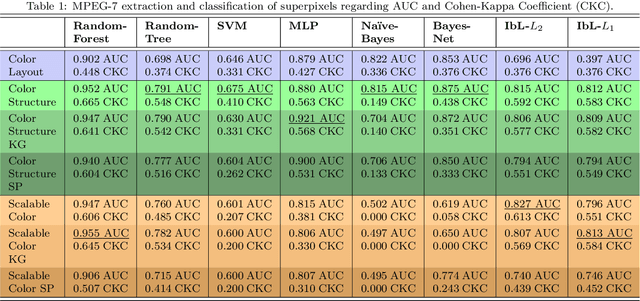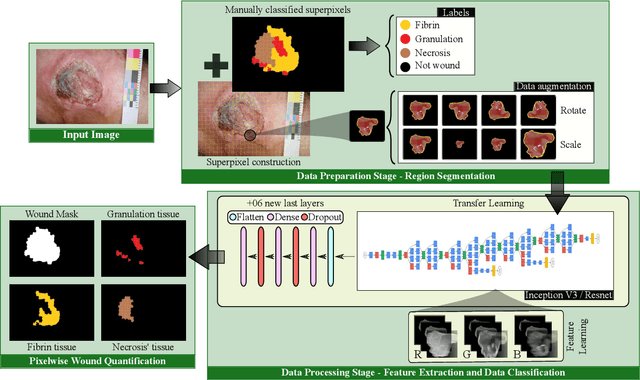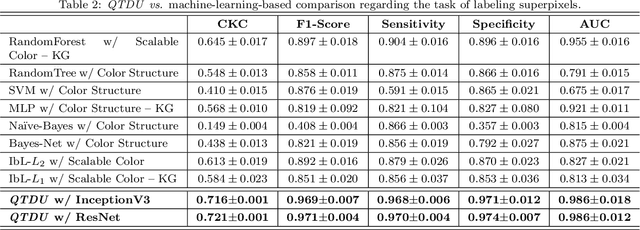Ana E. S. Jorge
A superpixel-driven deep learning approach for the analysis of dermatological wounds
Sep 20, 2019



Abstract:Background. The image-based identification of distinct tissues within dermatological wounds enhances patients' care since it requires no intrusive evaluations. This manuscript presents an approach, we named QTDU, that combines deep learning models with superpixel-driven segmentation methods for assessing the quality of tissues from dermatological ulcers. Method. QTDU consists of a three-stage pipeline for the obtaining of ulcer segmentation, tissues' labeling, and wounded area quantification. We set up our approach by using a real and annotated set of dermatological ulcers for training several deep learning models to the identification of ulcered superpixels. Results. Empirical evaluations on 179,572 superpixels divided into four classes showed QTDU accurately spot wounded tissues (AUC = 0.986, sensitivity = 0.97, and specificity = 0.974) and outperformed machine-learning approaches in up to 8.2% regarding F1-Score through fine-tuning of a ResNet-based model. Last, but not least, experimental evaluations also showed QTDU correctly quantified wounded tissue areas within a 0.089 Mean Absolute Error ratio. Conclusions. Results indicate QTDU effectiveness for both tissue segmentation and wounded area quantification tasks. When compared to existing machine-learning approaches, the combination of superpixels and deep learning models outperformed the competitors within strong significant levels.
 Add to Chrome
Add to Chrome Add to Firefox
Add to Firefox Add to Edge
Add to Edge